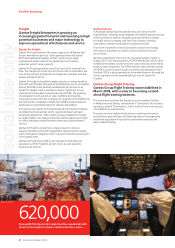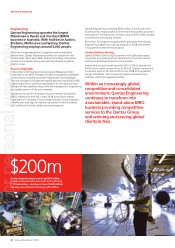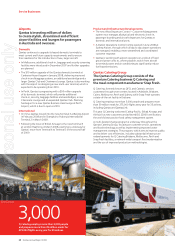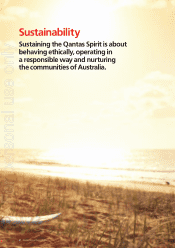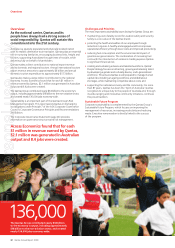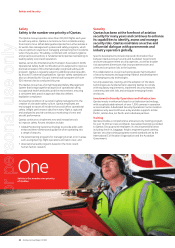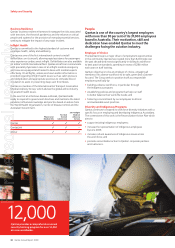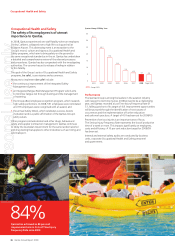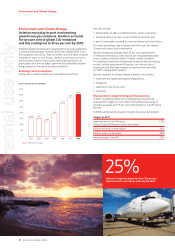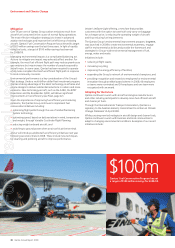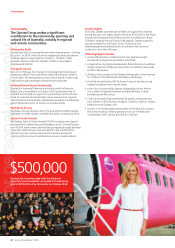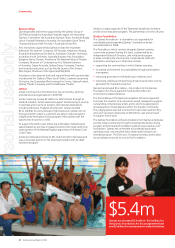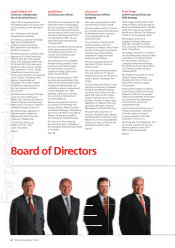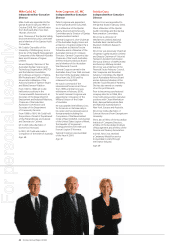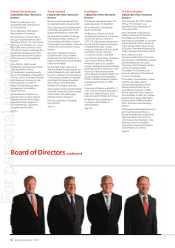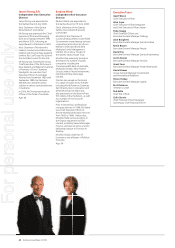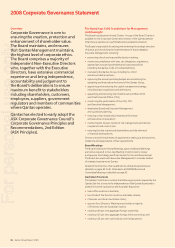Qantas 2008 Annual Report Download - page 39
Download and view the complete annual report
Please find page 39 of the 2008 Qantas annual report below. You can navigate through the pages in the report by either clicking on the pages listed below, or by using the keyword search tool below to find specific information within the annual report.
37 Qantas Annual Report 2008
25% 25%
Qantas is targeting a greater than 25 per cent
improvement in emissions intensity by 2020.
Environment and Climate Change
Environment and Climate Change
Aviation must play its part in minimising
greenhouse gas emissions. Aviation accounts
for two per cent of global CO2 emissions
and this could grow to three per cent by 2050.
Emissions trading schemes are in development in several jurisdictions
in which Qantas operates: Australia (2010), New Zealand (2011) and
the European Union (2012). These schemes could introduce material
compliance costs for the Group. Qantas continues to press for
harmonised schemes that create a level playing field for all
participants and ‘time to adapt’ given the broad benefits aviation
brings relative to the size of its carbon footprint.
Reducing Fuel Consumption
Qantas has no direct control over the market price of fuel.
Key risks include:
• limited ability to pass on additional fuel costs to customers;
• timing of delivery of new, more fuel efficient aircraft; and
• pace of innovation required to move to a lower emissions future.
To reduce greenhouse gas emissions and fuel costs, the Qantas
Group must reduce fuel consumption.
Qantas is targeting a greater than 25 per cent improvement
in emissions intensity by 2020 and has set an aspirational target
of zero carbon emissions within 50 years, earlier if possible.
This estimate is based on the planned arrivals of new technology
aircraft, further operational efficiencies, the introduction of
cleaner jet fuels and improvements in government controlled
air traffic management systems.
Qantas’ response to climate change is based on four pillars:
• measurement, target setting and transparency;
• mitigation;
• adapting for the future; and
• offsetting.
Measurement, Target Setting and Transparency
In 2007, the Qantas Group set a challenging environmental
improvement target of a two million tonne efficiency saving of
greenhouse gases and 7.5 per cent improvement in fuel efficiency
by 2011.
In 2008, additional improvement targets have been established.
Targets to 2011
Improvement in fuel efficiency
(litres of fuel/100 Revenue Tonne Kilometre)
7.5%
Reduce electricity consumption 10%
Reduce water consumption 25%
Reduce waste to land fill 25%
500
0
1,000
1,500
2,000
2,500
3,000
3,500
4,000
3,602
2008
3,337
2007
2,802
2006
1,932
2005
Fuel Costs ($ million)
Qantas Group Fuel Cost ($million)
2004
1,356
2003
1,540
2002
1,570
For personal use only


